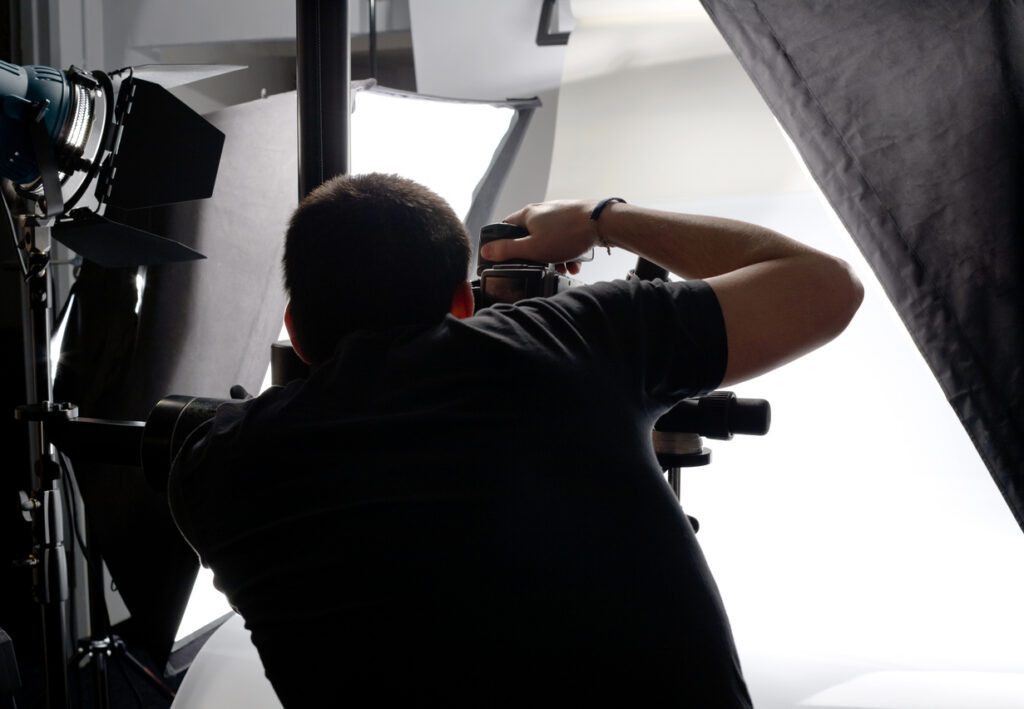A Campaign Photographer Ponders An AI-Powered Future

After Doug McGoldrick first graduated with an MFA in painting decades ago, he was looking for a job. As it turned out, there wasn’t a lot of work being advertised for conceptual painters. But he had a friend who suggested he could find work assisting photographers.
So when he moved to Chicago, he started out by helping commercial photographers on their shoots. A brief stint with a political design agency led to him getting contracted with Democratic mail firms to shoot photos of candidates. Now, he works with a variety of mail firms shooting portraits and in-the-field photos for Democratic candidates from Illinois to Massachusetts.
C&E: What’s your concern around AI?
McGoldrick: Loss of work, which is scary. Instead of hiring me to shoot someone running for governor, they’ll just put in that person’s name and [the words] “kitchen table” and then AI will generate a picture of that person at a kitchen table with some seniors instead of hiring me to do the shoot.
But also, if I was working at a mail firm, what I would be worried about is there’s no way to copyright an AI image at this point. So I could do a mail piece showing my candidate at a kitchen table and the headline says, “John Smith loves old people.” And then my competition could take that exact same image and make an ad that says, “John Smith hates old people.” And copyright-wise, there’s nothing that can be done about it. Each one would be equally legal under the current law with AI.
C&E: How aware are candidates of this? Because they may be getting pitched on how much cheaper AI image can be.
McGoldrick: That’s a big concern. A lot of people in the political world, they see an image online and they think they can just grab it and use it. They don’t think about the copyright of an image. I think a lot of people are leaving themselves open for lawsuits and for trouble when it comes to AI because it is so new. They just assume, “Well, I can just do this, right?” They don’t think about the repercussions down the road of having an image that could have a copyright problem.
C&E: Are you seeing hard-to-detect generative AI images right now? A lot of them look obviously fake.
McGoldrick: The program right now that’s generating the most realistic stuff is a program called Midjourney. I’ve seen stuff from that that’s like, wow, it looked really good. It has some problems with hands and fingers and stuff like that. But I’ve seen some stuff that’s very hard to tell — especially a portrait.
C&E: This wasn’t even a conversation two years ago. How quickly could this develop?
McGoldrick: I think people are like, ‘Wow, this is a lot cheaper.’ But they aren’t thinking long-term about, how this is going to affect the campaign?
Or just from a humanitarian perspective: it’s other people’s jobs that are being taken away by using the AI as well. When AI generates an image, it doesn’t really generate an image from thin air. It searches the internet for similar images that it thinks you want, combines them together into something new, and makes an image out of that. There’s a lot of ethical problems with AI that way. It is kind of a stealing program.
C&E: In your conversation with clients and firm owners right now, are they getting more attracted to the cost savings as opposed to being concerned about the political fall out?
McGoldrick: For down-ticket, maybe a city alderman or a water reclamation candidate, I think they’re probably more tempted to save a couple bucks because they don’t have a lot of bucks. But the bigger [budget] campaigns, I think they’re most likely still going to keep doing real photoshoots. I hope it stays that way.
C&E: Can AI help your work at all? Maybe with photo editing?
McGoldrick: There are some ways it does help right now. There’s software that uses AI to edit a face — clean up wrinkles and shiny skin and that kind of stuff. It uses AI to fill that in for you, which makes it a much quicker process.
There’s also AI software out there where, let’s say there’s a stop sign in the frame and you want to get that out of the frame, you can just circle it and say “remove” and it will pop out the stop sign and put in the background that it thinks should be there. That kind of stuff is making my editing time quicker. Because it’s just minor tweaks, I feel OK about using it at this point.

